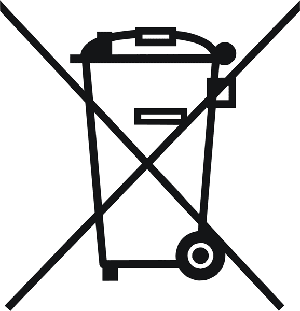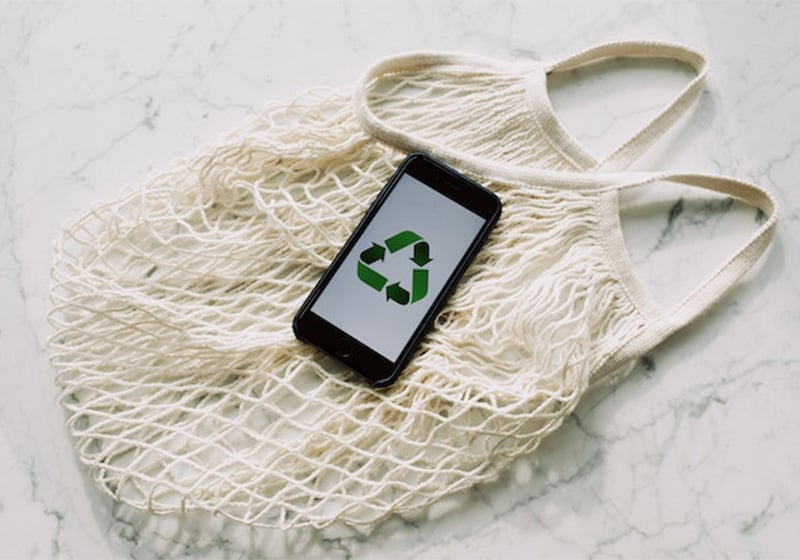Table of Contents
The packaging of the products we buy features various recycling symbols, logos and alphanumeric codes relating to the type and origin of the packaging materials and how to dispose of them after use. The pictograms and acronyms on packaging are often rather tricky for consumers to understand, leading to confusion about which bin they should be placed in. With this in mind, we’ve put together a guide explaining the meaning of the most common recycling symbols, material codes and environmental certification logos.
The most common recycling symbols
The Mobius loop – an internationally recognised recycling symbol
This is probably the best-known recycling symbol of all, featuring three chasing black or green arrows that correspond to the various stages of the material recovery process (reduce, reuse and recycle). The history of this symbol goes back all the way back to 1971, when an American company, the Container Corporation of America, launched a competition to design a pictogram that would encourage consumers to recycle their paper products. The winner of the $2000 prize was Gary Anderson, an engineering student, although he had to surrender his rights over the logo in line with the contest’s rules.
The Mobius loop remains in the public domain to this day, and the icon can be found on a vast array of paper, cardboard and wood-pulp packaging. Its meaning is a little ambiguous, as it can indicate either that an item is recyclable or that it is made of recycled materials. In the case of the latter, it is sometimes depicted with a percentage showing the amount of recycled material the packaging contains.

The Triangle of Arrows
The triangle of arrows symbol sometimes contains numerical codes corresponding to the various types of material used in the packaging. The codes tend to be accompanied by acronyms that enable consumers to recognise the materials more easily. For example, the numbers from 1 to 7 are used to indicate different categories of plastics, the numbers from 20 to 22 and the acronym PAP represent paper and cardboard packaging, while iron, glass and aluminium are identified with the codes FE 40, GL 70 or GL 71 and ALU 41 respectively.

The recycling codes currently used in Europe and the UK were defined by the European Commission in Decision 97/129/EC, which produced an identification system for various packaging materials based on numbers and acronyms. Although using the codes is not compulsory, many companies have decided to adopt them to make it easier for consumers to sort materials for disposal. The numbers and acronyms cover glass, plastic, paper, metal, wood, fabric and composite materials and form part of a product’s environmental labelling, placed at the centre of and below the recycling symbol.
The Green Dot
This image indicates that the manufacturer uses an efficient packaging collection and recycling system and not, as you might think from its similarity to the Mobius loop, that the materials used are recycled or recyclable. You can find it on plastic, paper or cardboard packaging, cans and glass containers, but not all businesses can use it. The Green Dot is actually trademark protected, owned by Duales System Deutschland GmbH (DSD), with stewardship entrusted across Europe (except in Germany) to PRO Europe (Packaging Recovery Organization Europe).

Typically, manufacturers can sign a contract covering the handling of their waste packaging that grants them a licence to use the Green Dot logo in each individual country. Use of the logo is voluntary in most European nations, but it is a legal requirement in Spain and Cyprus. The Green Dot is effectively meaningless in the UK, although you still need a licence to use it on packaging.
The Tidyman
This pictogram is not technically a recycling symbol and it is not mandatory, but nevertheless you still come across it quite frequently. It is used by companies to encourage customers not to litter their products after use, but instead to put the packaging in the bin.

Compostable®
This symbol, a registered trademark of European Bioplastics, shows that the packaging can
be composted industrially in accordance with European standard EN 13432.

OK Compost
These two logos indicate respectively that the materials can be composted in industrial waste recycling centres or in home composting systems.


The WEEE logo
WEEE branding is found on all electrical and electronic equipment sold on the EU and UK market. It indicates that the products contain substances that can harm the environment and cannot be disposed of with generic waste, but instead must be collected separately or passed on to appropriate facilities for disposal and recycling.

As well as these recycling symbols, packaging often features logos attesting to the manufacturer’s environmental certifications, as a way of proving their environmental credentials.
FSC® – Forest Stewardship Council
The Forest Stewardship Council (FSC®) logo indicates that the packaging contains paper or wood sourced from responsibly managed forests. To request this certification, businesses must have a traceability system in place that proves the origin of the material used for the product, and then apply directly to the FSC®.

PEFC™
The PEFC™ (Programme for the Endorsement of Forest Certification Schemes) label certifies that the forest- and tree-derived materials within the product come from sustainably managed forests. Like the FSC® label, this certification is voluntary, and is only issued once certain environmental, social and economic requirements have been verified.


EU Ecolabel
EU Ecolabel is an environmental label based on a system of criteria that consider the environmental impact of the products or services a business provides throughout their entire life cycle. This label was founded in 1992 by Regulation no. 880/92 and applies in the 27 European Union member states plus Norway, Iceland and Liechtenstein. It no longer applies in the UK.

Takeaways
On the one hand, European regulations and national laws on dealing with packaging force businesses to provide detailed information on the materials used in their packaging and on how waste should be collected, reused and recycled. And on the other hand, more environmentally conscious consumers choose the products they buy based on the recycling symbols and the environmental labelling on the packaging, preferring brands that make use of recyclable packaging. Companies that want to stand out from their competitors, reach new market segments and improve their reputation therefore need to learn how to communicate their commitment to reducing the environmental impact of their single-use packaging effectively.

